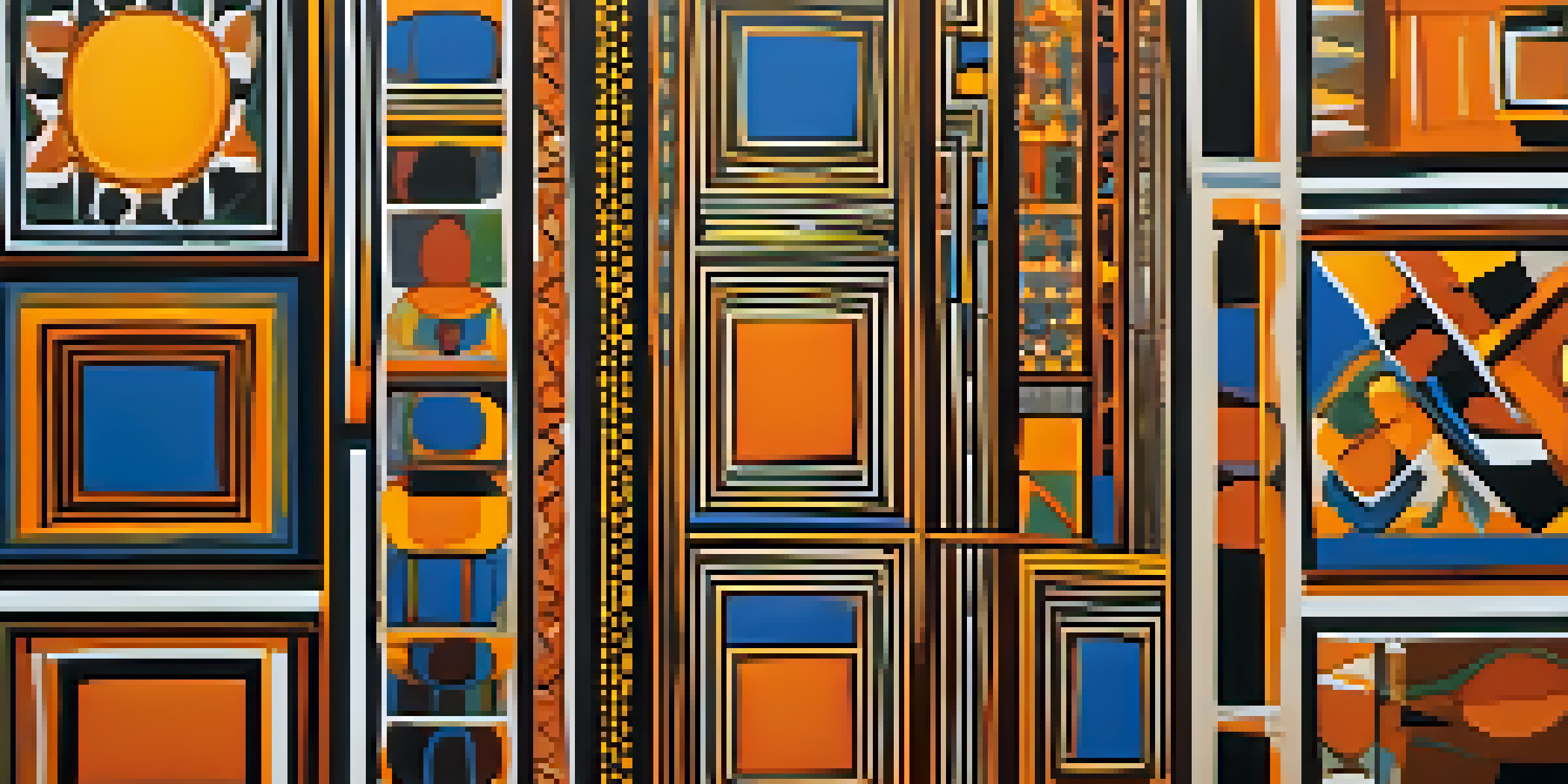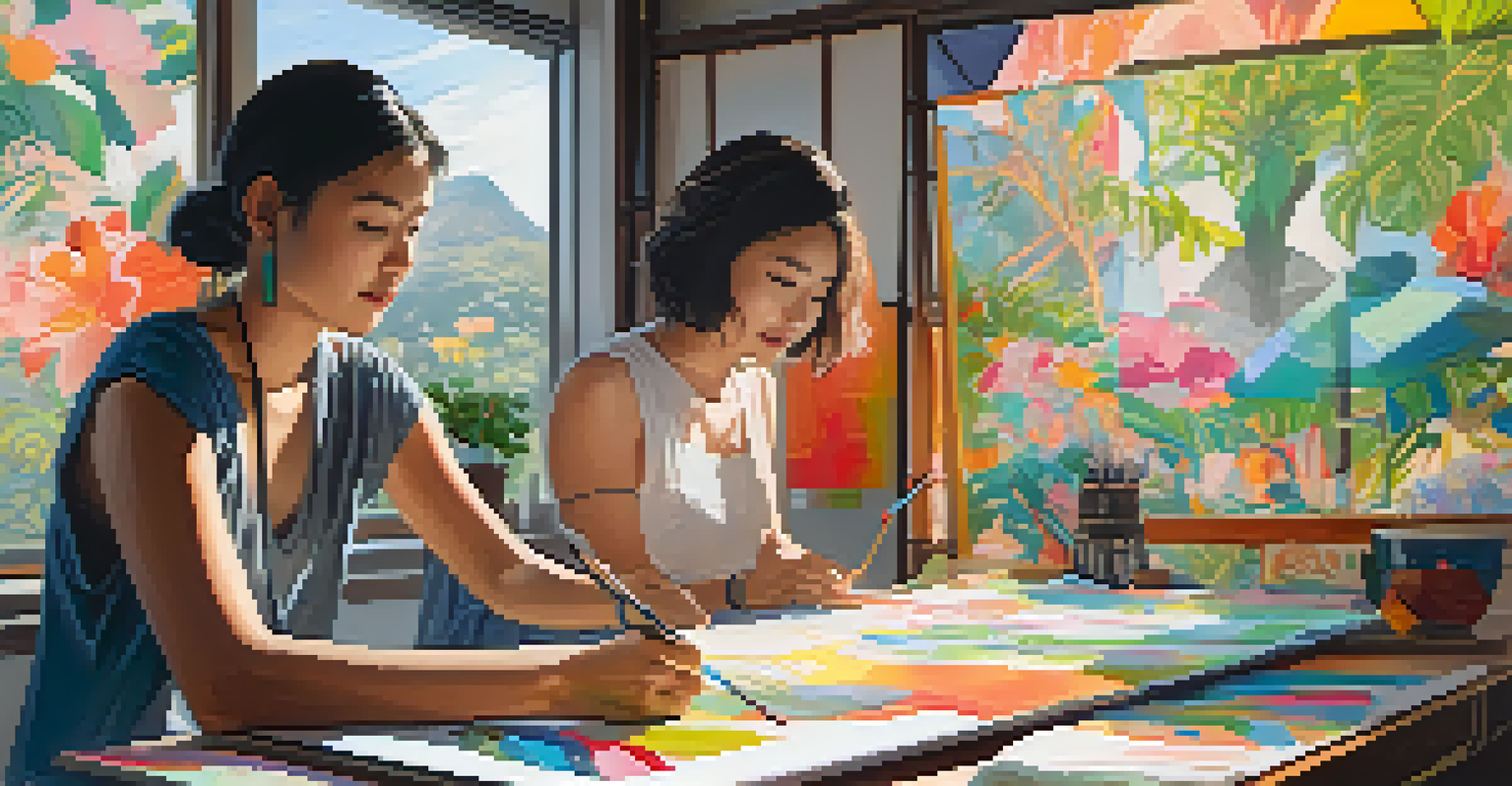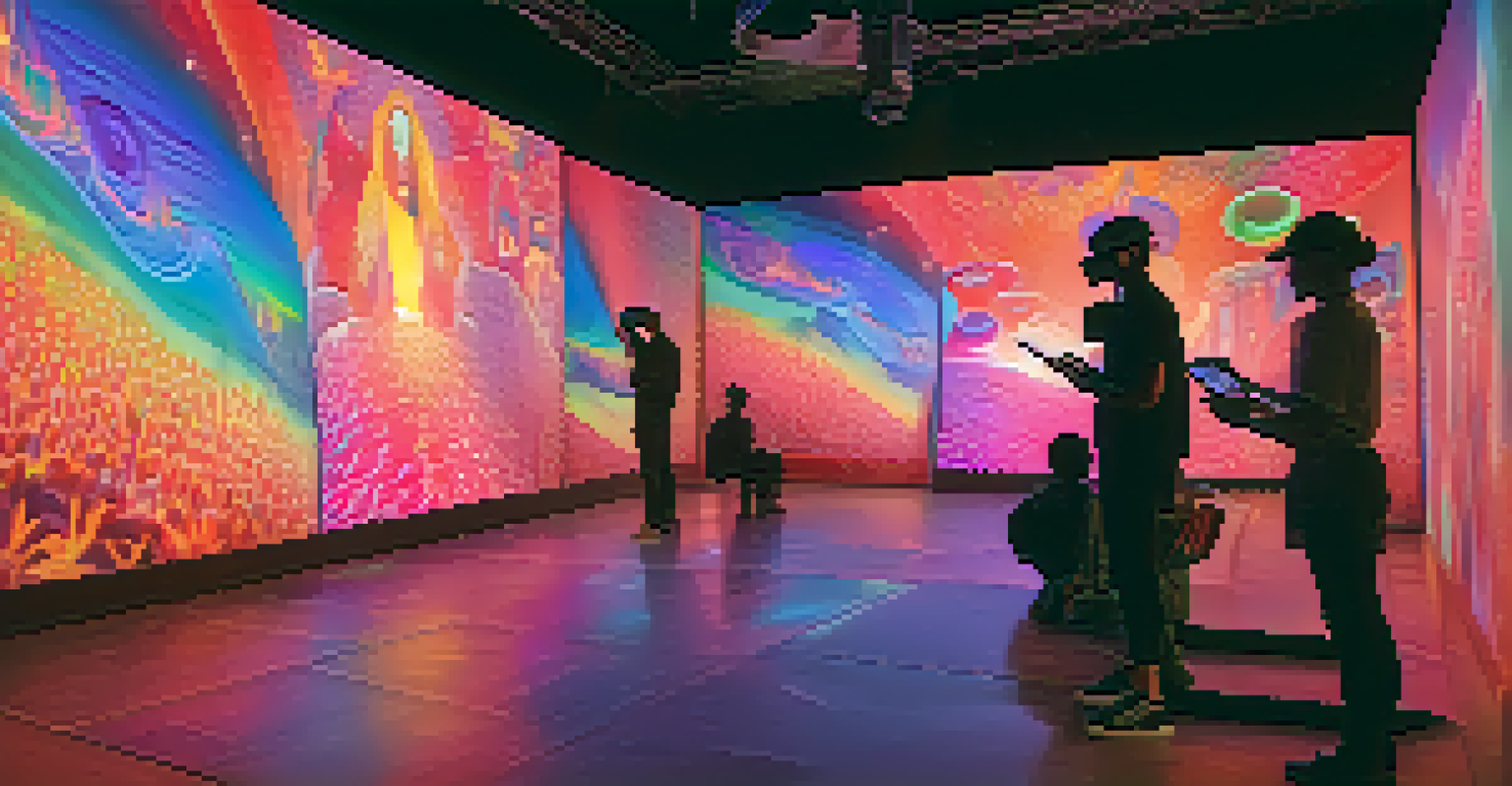Exploring the Fusion of Cultures in Contemporary Art

Understanding Cultural Fusion in Modern Art
Cultural fusion in contemporary art refers to the blending of diverse artistic traditions. This interplay often results in vibrant, innovative expressions that reflect a global community. Artists draw inspiration from their own heritage while incorporating elements from other cultures, creating unique and thought-provoking pieces.
Art is the most beautiful of all lies; it is a lie that makes us see the truth.
This phenomenon can be seen in various art forms, from painting to digital media. For instance, a traditional African motif might be combined with modern abstract techniques, resulting in a strikingly fresh artwork. Such combinations not only showcase the artist's versatility but also invite viewers to engage with multiple cultural narratives.
Ultimately, the fusion of cultures in art serves as a testament to our interconnectedness. It challenges the notion of cultural purity, encouraging a celebration of diversity while fostering dialogue between different artistic communities.
Historical Context of Cultural Exchange in Art
To appreciate the current fusion of cultures in art, it's essential to look at its historical roots. Throughout history, trade routes and colonialism have facilitated exchanges between different civilizations, influencing artistic styles and techniques. For example, the Silk Road was a pivotal channel through which Eastern and Western art forms began to intertwine.

These historical interactions laid the groundwork for modern artists to explore and innovate. By examining earlier works that blend cultural elements, we can see the evolution of artistic expression that transcends geographical boundaries. These influences continue to resonate in the art we see today, showcasing a rich tapestry of ideas.
Cultural Fusion Celebrates Diversity
Contemporary art uses cultural fusion to celebrate diversity, allowing artists to share their unique backgrounds and foster inclusivity.
Understanding this historical context enriches our appreciation of contemporary art. It highlights how artists draw from a vast pool of inspirations, creating works that are not only aesthetically pleasing but also deeply rooted in a shared human experience.
Influence of Globalization on Artistic Practices
Globalization has significantly impacted how cultures interact and influence one another in the art world. With advancements in technology and communication, artists can now connect with peers and audiences worldwide. This unprecedented level of interaction fosters a vibrant exchange of ideas, techniques, and cultural references.
The purpose of art is not a rarified, intellectual distillate; it is life, intensified, and a more vivid experience of being alive.
For example, social media platforms allow artists to showcase their work globally, gaining exposure and inspiration from diverse sources. This means that an artist in Brazil can collaborate with a designer in Japan, resulting in a creative fusion that transcends borders. Such collaborations not only enhance individual artistic practices but also enrich the cultural landscape.
As globalization continues to shape our world, its effects on contemporary art are profound. Artists are now more empowered than ever to explore new avenues of expression, drawing from a rich palette of cultural influences that reflect our shared experiences.
Celebrating Diversity Through Artistic Expression
One of the most beautiful aspects of cultural fusion in art is its ability to celebrate diversity. Contemporary artists often highlight their unique backgrounds and experiences, using their work as a platform to share their stories. This celebration of diversity not only enriches the art community but also fosters inclusivity and understanding among audiences.
Take, for instance, the works of artists like Ai Weiwei, who infuse their cultural heritage with contemporary themes. His art often addresses social issues while drawing from traditional Chinese motifs, creating a dialogue that resonates across cultures. This blending of perspectives encourages viewers to reflect on their own cultural identities and experiences.
Globalization Shapes Artistic Practices
Globalization enables artists to connect and collaborate across borders, leading to innovative artworks that reflect a rich blend of cultural influences.
By embracing diversity in artistic expression, we can create spaces where different voices are heard and valued. This not only enhances the richness of contemporary art but also promotes a broader understanding of the world around us.
The Role of Technology in Cultural Fusion
Technology plays a pivotal role in facilitating cultural fusion in contemporary art. With tools like digital media and virtual reality, artists can experiment with new forms and methods of expression. This technological advancement allows for the seamless blending of different cultural elements, resulting in innovative artworks that challenge traditional boundaries.
For instance, digital artists can incorporate music, animation, and visual art into a single piece, creating an immersive experience. This fusion of various media not only showcases artistic creativity but also reflects the multifaceted nature of modern culture. Artists can draw from a global pool of influences, resulting in works that resonate on multiple levels.
Moreover, technology enables artists to reach wider audiences, encouraging a global dialogue about cultural exchange. As artists continue to harness the power of technology, the fusion of cultures in art is likely to evolve, offering new and exciting possibilities for creative expression.
Challenges in Cultural Appropriation vs. Appreciation
While cultural fusion in art is often celebrated, it also raises important questions about cultural appropriation versus appreciation. Appropriation occurs when elements of one culture are used without understanding or respect, often leading to misrepresentation. In contrast, appreciation involves honoring and acknowledging the significance of those cultural elements within their original context.
Contemporary artists must navigate this delicate balance as they draw from diverse influences. Engaging with cultural elements responsibly requires research, dialogue, and respect for the source. For example, artists who collaborate with indigenous communities demonstrate appreciation by involving those communities in the creative process, ensuring that their perspectives are honored.
Navigating Appropriation Challenges
Artists must balance cultural appropriation and appreciation, ensuring respect for cultural elements and involving communities in the creative process.
Addressing these challenges is crucial for fostering a more inclusive art world. By promoting understanding and respect, artists can create works that genuinely reflect cultural fusion while avoiding the pitfalls of appropriation.
The Future of Cultural Fusion in Contemporary Art
As we look towards the future, the fusion of cultures in contemporary art is poised to evolve even further. With ongoing globalization and technological advancements, artists will continue to explore new ways to express their identities and experiences. This ever-changing landscape presents exciting opportunities for creativity and collaboration.
Emerging artists are already pushing boundaries, experimenting with unconventional mediums and themes that reflect a diverse range of influences. As they challenge traditional norms, we can expect to see more innovative works that resonate with global audiences. This evolution will likely inspire established artists to reconsider their own practices and embrace new possibilities.

In this dynamic environment, the fusion of cultures in art will remain a vital force. It will not only shape individual artistic journeys but also contribute to a rich and diverse cultural narrative that celebrates our shared humanity.